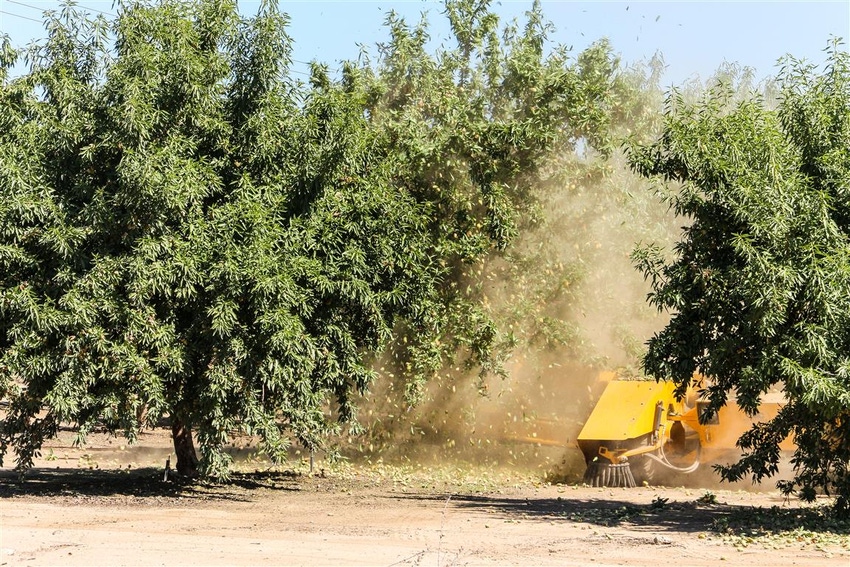
For Tulare County, Calif, the numbers tell an interesting story.
After hitting an all-time high of over $8 billion in 2014, the annual crop value in the county in 2015 fell more than $1.1 billion to $6.98 billion.
Most counties don’t have crop values as high as the losses realized by Tulare County.
For Marilyn Kinoshita, agricultural commissioner for the prominent California farm venue, the 13.7 percent decline in overall crop values can be blamed on a multitude of factors.
Because Tulare County continues to produce more milk by volume than do most states, the producer price of milk is a significant factor in which way the county trends.
In 2014 the county’s average milk price was above $22 per hundredweight in a year that saw the national all-milk price stay above $20 for the entire calendar year.
Things were much less robust for dairy producers in 2015 as milk prices fell, on average, at least $5 per cwt. This pulled the value of milk produced in the county down by over $800 million to $1.7 billion, according to the 2015 crop report.
Milk accounts for nearly 25 percent of Tulare County’s total crop value.
In the plus column, field crop values grew almost 63 percent, brought on largely by big gains in small grain silage and corn acreage.
Barley for grain, for instance, saw a six-fold increase in harvested acreage (6,820 acres total) on a year that saw prices climb nearly 50 percent.
Corn for grain production grew almost 500 percent to 5,610 acres. Stronger prices for corn netted a 10-fold increase in overall value of corn.
Small grain silage – typically barley, oats, sorghum, triticale and wheat – also saw huge gains in acres harvested, up almost 300 percent in total acreage. Though the unit price paid to growers for small grain silage fell 23.5 percent, the overall value of the crop grew more than four-fold.
Another big gainer was sudan grass for hay. Acreage climbed from almost non-existent in 2014 (168 acres) to over 15,000 acres in 2015.
Wheat for grain was up similarly to over 37,000 acres with better yields and slightly higher prices reported.
A considerable amount of acreage in Tulare County is devoted to permanent plantings. More than 380,000 acres of various fruit and nut crops – grapes, tree nuts, and tree fruit – are planted throughout the county.
“I was a bit surprised that we had a net decrease of permanent planting acreages last year,” Kinoshita told county supervisors during her presentation to the board.
She credited that in part with the loss of citrus groves in the eastern portion of the county, where water tables went dry and growers had no access to surface irrigation water in 2014.
Kinoshita was also surprised with the reduction of walnut acreages, down more than 9 percent to 36,500 bearing acres. Walnut yield was similarly down as the unit price for walnuts were up a few dollars to $2,920 per ton.
Almond yields dipped below 2,000 pounds per acre as grower prices fell about 10 percent. Almond hull prices (cattle feed) similarly fell short of previous year’s prices.
As the No. 1 orange producer in the state, citrus growers saw a mixed bag in 2015.
Navel oranges – the largest segment of the citrus crop – were down 6,800 acres (8.5 percent), while the harvested acres of fresh grapefruit, lemons and tangerines each grew. Tangerines had the largest gains with 3,000 additional bearing acres (nearly 14 percent) over the previous season.
Nearly 40 percent of Tulare County’s orange crop is exported, making it the largest segment of the county’s export pie.
“We spend about one-third of our time on inspections of export products,” Kinoshita told the board.
Pistachios had a significantly off year – some likened it to a “crop failure – which had more to do with the previous winter’s lack of adequate chilling hours and less to do with the on/off year production cycles of the nut crop.
Yields fell to an average of 1,280 pounds per acre as prices softened slightly to just under $6,300 per ton.
Tulare also saw declines in grape production of all kinds – table, raisin and wine. Acreages for wine grapes were off almost 21 percent as table varieties fell 12 percent and raisin grape acreages were off 19 percent.
Fresh blueberries had a significantly positive year as yields doubled to 6.77 tons per acre for total crop yield of 8,130 tons per acre.
Cherries had a similarly positive year with yields averaging 3,560 pounds per acre.
At the end of the day, Tulare’s top five commodities – milk, cattle and calves, oranges, grapes and almonds – maintained their top-of-the-ledger status on the year, accounting for over $4.4 billion of the county’s $6.9 billion crop value.
County supervisors this year seemed to hone in on the consistent lack of irrigation water deliveries to growers as a reason crop production fell like it did.
“Is this a trend?” Supervisor Phillip Cox asked Kinoshita of what he’s seen of orchard removals in the county.
Kinoshita responded by saying that, aside from the age of a permanent planting, growers view pending government regulations and the continued lack of irrigation water as one reason growers remove permanent plantings.
“There is a definite slowdown with some crops,” she said. “It’s not as robust as it was two or three years ago.”
Check for the county crop report online.
About the Author(s)
You May Also Like






